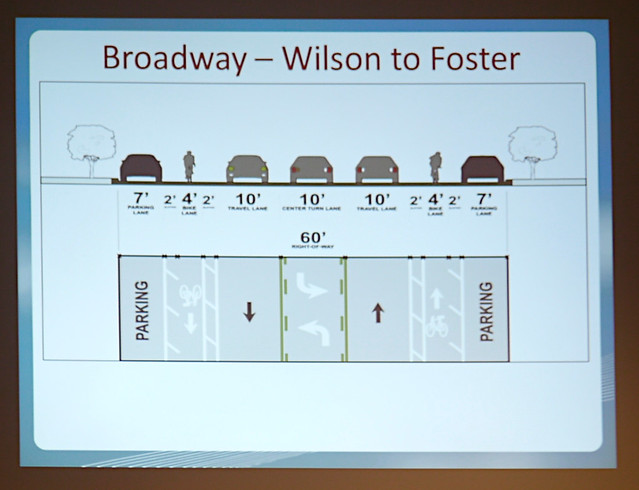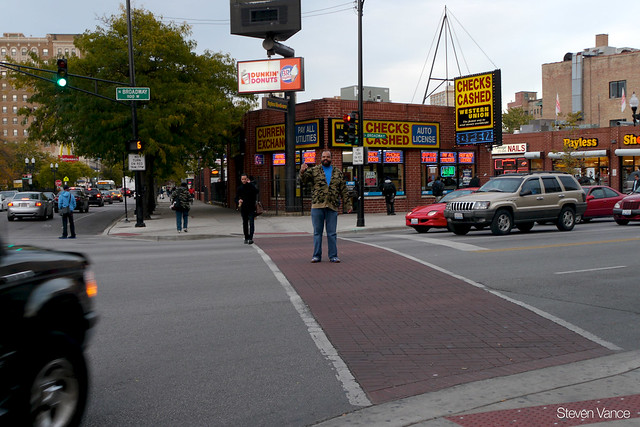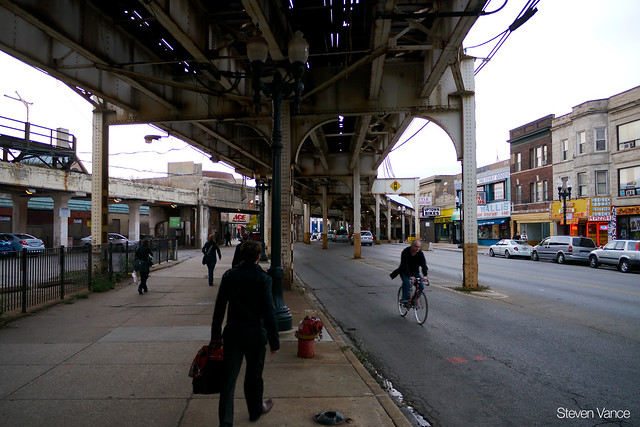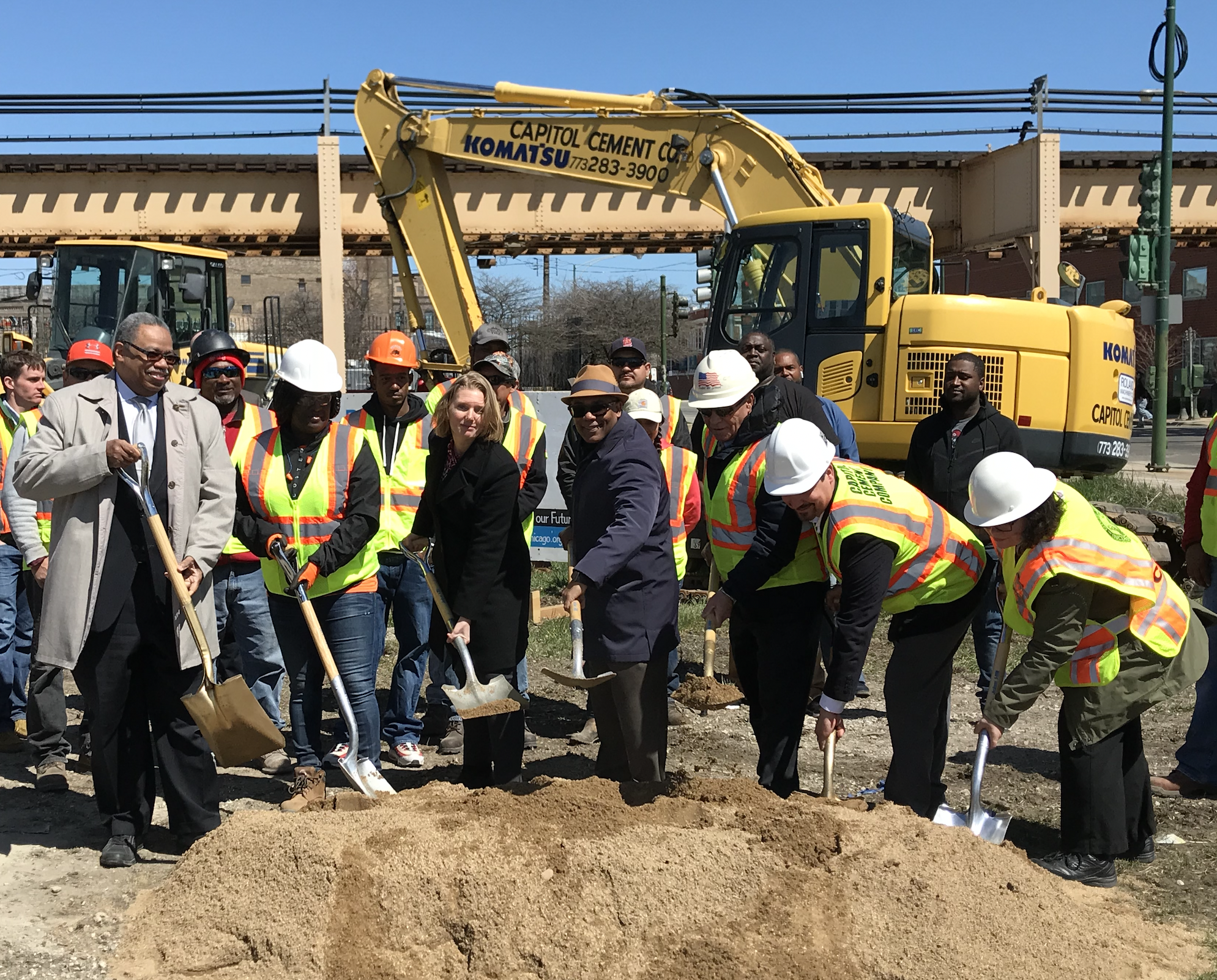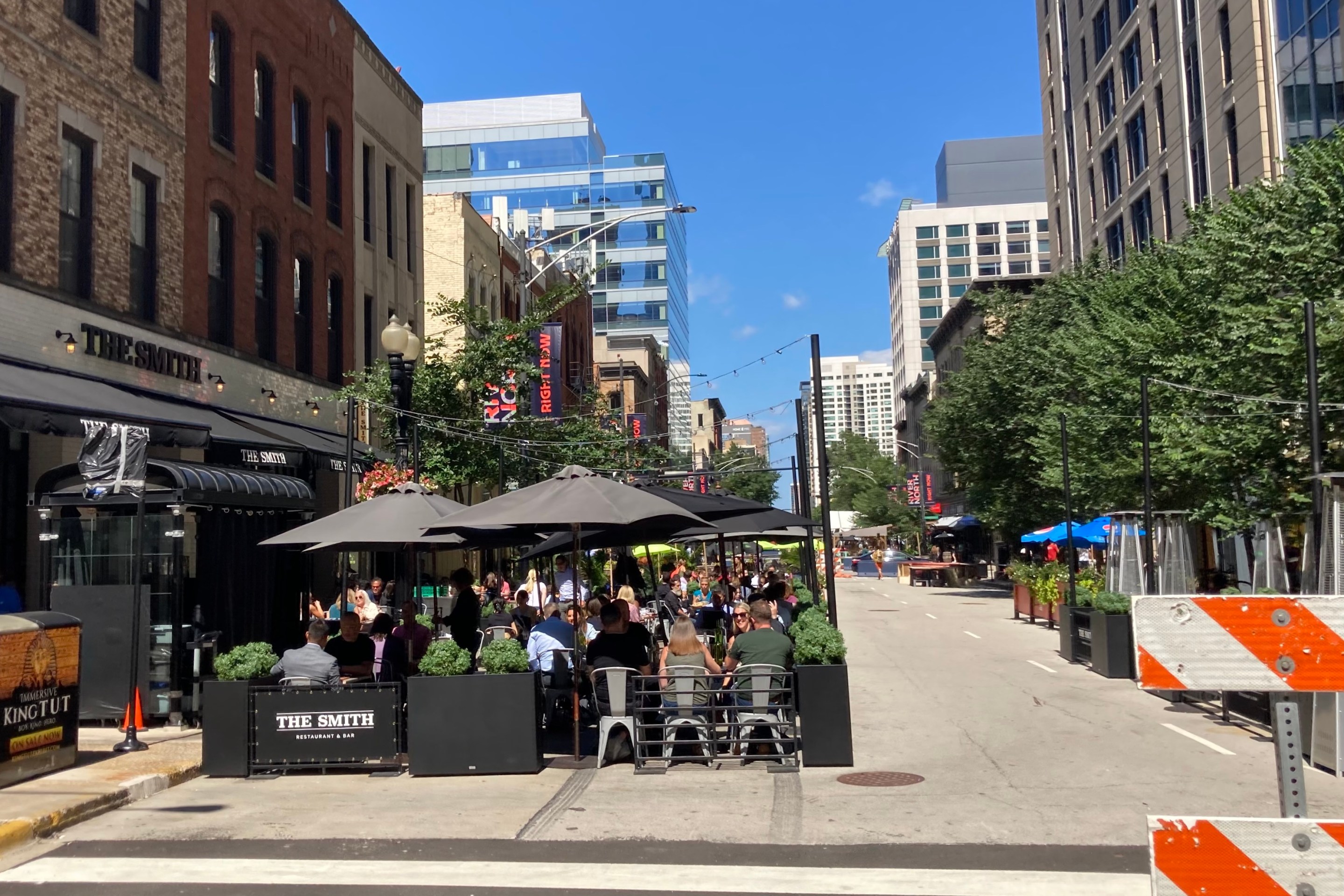The Chicago Department of Transportation will redesign Broadway between Montrose and Foster, a mile-long stretch that's currently a very car-centric four- to five-lane road. The street is so inhospitable that one resident at a public meeting Wednesday night said she doesn't drive, walk, or bike on it.
The agency failed to make a "complete street" out of Broadway when it created a new streetscape a few years ago between Montrose and Wilson, but is correcting that mistake by adding curbside protected bike lanes with a floating parking lane on that stretch. While DNAinfo gave the impression that the proposal, still in the design phase, calls for protected bike lanes along the whole stretch, a longer part of the street, from Wilson to Foster, will only get buffered bike lanes. (DNA also reported that the loss of four parking spaces is likely to be a point of future contention, but no one at the meeting lamented this.)
The redesign calls for a "road diet" that would convert space from one motor vehicle lane in each direction to a center-median left-turn lane and bike lanes. North of Wilson, the street is 10 feet narrower, and CDOT project manager Mike Amsden said protected bike lanes could fit there if curbside parking was consolidated to one side of the street or the center turn lane was removed. But he argued that a buffered bike lane is more appropriate between Wilson and Foster because there are more driveways and vehicles turning across the bikeway than on the southern portion of the street.
Amsden pointed out that the proposed design will make it safer for drivers, too, saying "we want to create roadways where people understand what to do." The center turn lane should lead to less weaving by drivers attempting to pass other motorists waiting to turn left.
Other changes include:
- Banning left turns from Broadway to Leland, where visibility of oncoming traffic is poor.
- Using the right lane under the CTA viaduct as a bike lane/right-turn lane. The viaduct will be replaced as part of the Wilson Red Line station replacement, removing all columns from the roadway.
- Potential improvements to the traffic island where Racine Avenue meets Broadway.
About 25 people came to the meeting and the reception was mixed but mostly positive. Of course, it wasn't without some crankiness. One attendee made sure to say he rides a bike before launching into a diatribe about how "bicyclists are inherently ignorant of the traffic laws." He continued:
The ones that they do know, they fly right through. I'm telling you it's a wonderful plan, but you're cutting down a traffic lane, and traffic in the city has become more and more cumbersome. ...So, when you cut down these lanes, Broadway is a wonderful road, when you shut down some of these lanes, are you planning for ten years down the road when traffic is going to be much greater coming up here? So I'm concerned that spending all this time and effort for bicyclists who do not adhere to the rules of the road, that do not stop at stop signs, do not stop at stop lights, they cut around, they shoot out before the lights change...
In fact, CDOT is planning for ten years down the road and for today. Already, a substantial majority of Uptown residents – 62.5 percent – don't drive to work, according to CDOT. Residents are clamoring for safe walking and bicycling facilities and converting wide speedways to safer, multi-modal streets is the only way to do that.
Amsden pointed out that Broadway has too much space for the level of traffic that it sees – about 11,000 to 13,000 cars per day. Road diets can work on roads with up to 25,000 cars per day, he said, citing Wabash Avenue between Harrison and Cermak as a recent example.
Many people thanked CDOT for bringing this proposal to Uptown, Active Transportation Alliance's Lee Crandell included. He asked CDOT to consider building concrete pedestrian islands, something agency staff have said they want to do for two years, though none have been built yet. Amsden said that to build concrete barriers, more funding is needed.
